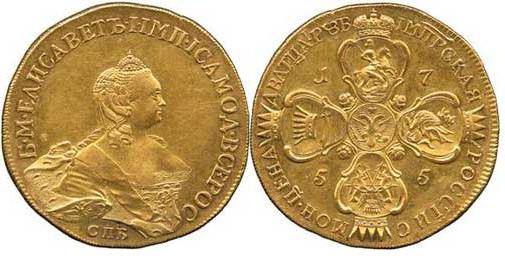Banknotes that have gone out of circulation become subjects of study by historians and numismatists. They are an integral part of an era that has gone down in history. For collectors of particular interest are the coins of Russia. Royal money means of payment are object of historical and cultural heritage. Most of them complement private collections, and only a few copies are kept in the funds of state museum institutions.
Tsarist coins of Russia did not always have a large circulation. Some were initially minted in pieces, others were lost, re-melted, so copies that have survived to this day are of particular value. The release of each of them could be associated with the accession of the new sovereign to the throne, holiday or tragic dates. It is noteworthy that the tsar’s coins of Russia before changing into a wide circulation could repeatedly change. Intermediate options were not destroyed, but were used for separate purposes (payment to foreign merchants, rewarding distinguished military leaders, etc.). The rarest tsarist coins of Russia were made of various metals: copper, bronze, silver, gold and even platinum.
It should be recognized that collecting coins of the period of the existence of tsarist Russia is not only a preservation of historical memory, but also a profitable financial investment, since over time the prices of valuable coins of tsarist Russia will only increase.
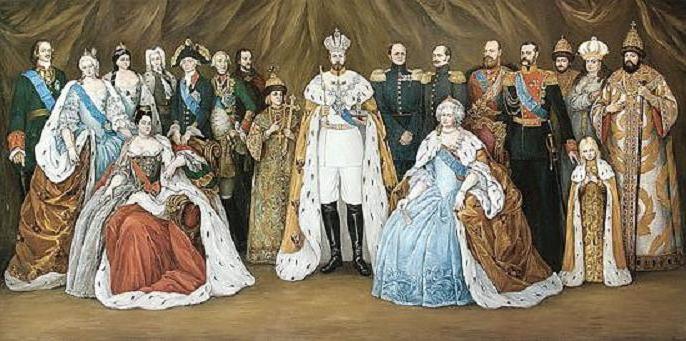
1725 year. Coin 1 ruble "Funeral"
The issue of this coin is associated with the death in early 1725 of Peter the Great, the great Russian emperor. By right, the throne was taken by Catherine the First. The Dowager Empress signed an order for minting a coin as a sign of grief. On the obverse of the coin, Catherine the First was depicted in simple clothes, without special regalia. Some historians argue that it was simply a great need to start issuing coins of the new sovereign as soon as possible, so as not to wait for the manufacture of a new stamp, they used the existing one. The cost of this coin varies greatly. Based on the degree of safety, the average price is from 610 to 827 thousand rubles. However, at an auction in February 2016, one copy was sold for only 350 thousand rubles.
1730 year. Coin 1 ruble "Anna with a chain"
At the beginning of the reign of Anna Ioannovna, a new format for cash coins was being developed. The coin with the face value of 1 ruble, called “Anna with the chain”, is a trial coin. It was made of silver. The coin is a rare historical relic. It is reliably known about the existence of three copies, one of which was bought by a private collector at an auction for $ 700 thousand. One sample of the coin is stored in the State Hermitage Museum (St. Petersburg) and the Smithsonian Museum of American Art (Washington, USA).

1755 year. Coin 20 rubles
This coin was considered rare in the era of the XVIII century. By a special decree of Empress Elizabeth Petrovna, it was cast in gold, had a circulation of only two pieces. Currently, one copy is in storage at the State Hermitage Museum (St. Petersburg), the other replenished a private collection (London). The obverse of the coin has an image of a portrait of Empress Elizabeth Petrovna in profile. On the reverse in the center is the coat of arms of the Russian state, to which the arms of Astrakhan, Kazan, Moscow and Siberia adjoin.
1803 year. Coin 5 rubles
Emperor Alexander the First established a relatively small number of new coins. One of them, worth 5 rubles, had two varieties.The difference was in the initials of the ministry master, who began to mint on these coins only from 1803. Cash in denominations of 5 rubles during the reign of Alexander the First did not have an engraved portrait of the emperor on the front side. Instead, four patterned shields were placed on the coin, which were connected by a fifth shield, where the coat of arms was placed - a two-headed eagle. On the other side of the coin was depicted a laurel-oak wreath and the crown of the Russian Empire.
1836 year. Coin 12 rubles
During the reign of Emperor Nicholas I, a rare type of coin was produced. The interest in the coin of 12 rubles in 1836 is due to the fact that the minting was carried out from the most valuable precious metal - platinum. Up to this point, no state in the world has used this metal to issue national money. According to some reports, the circulation of this coin was only 11 copies. Subsequently, the release of such coins was carried out in the second half of the XIX century by a special decree of the emperor for private collections. The rarest copies of this coin can only be purchased at auctions.
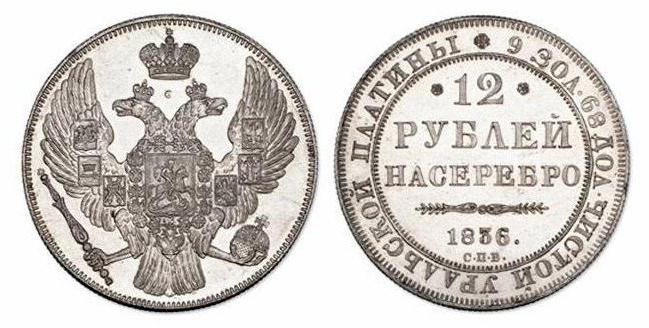
1907 year. Coin 5 rubles
In the summer of 1907, the construction of the Orthodox Church of them was begun in the camp of the Life Guards of the Equestrian Imperial Regiment near the city of St. Petersburg St. Olga. In honor of the memorable occasion, the mint struck 109 gold coins with a face value of 5 rubles. 100 copies in a festive atmosphere in the presence of Nicholas II, Empress Alexandra Fedorovna and Grand Duchess Olga Nikolaevna were laid in the foundation. These coins also personified the anniversary date - the 100th anniversary of the regiment's participation in the battle against the French army of Napoleon, which took place near Friedland. The remaining coins were handed out to those invited to the ceremony. In March 2011, one copy of the gold 5 rubles in 1907 was sold at auction for 4,350,000 rubles.
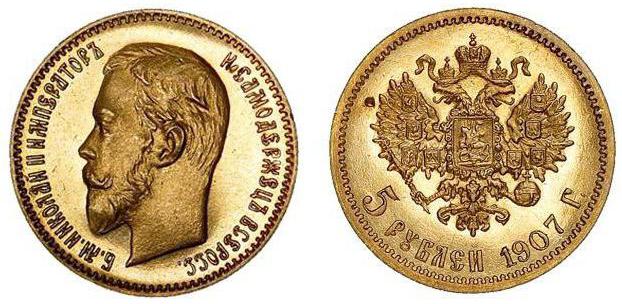
The cost of rare coins of Tsarist Russia
Any coin of Tsarist Russia is sold at international and national auctions at a fairly high price. The value of the metal is the metal of manufacture, as well as the place where the coinage was made. In the imperial era, there were two mints: Moscow and St. Petersburg. As a rule, on the reverse of coins when minting, their engraving was indicated: MMD and S.P. B, respectively. The value of some coins is affected by such a nuance as the presence of the initials of the minicamer (the head of the mint).
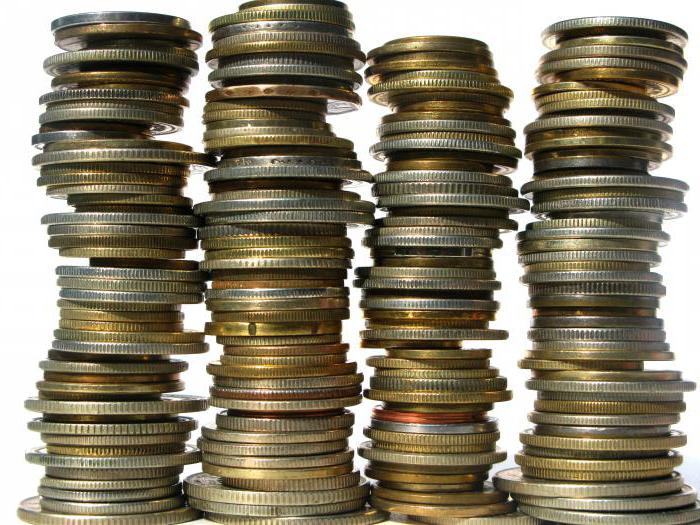
Coins of Tsarist Russia, which have survived to this day, have a different degree of preservation. Therefore, the higher this level, the higher the value of the coin will be, despite the number of copies.
It should be noted that the price of coins of tsarist Russia also depends on the form and type of auction. The table shows the average cost of rare items.
| No. p / p | Coin Name | Metal stamping | Number of copies | Coin value | Currency |
| 1 | 1725 year. Coin 1 ruble "Funeral" | Silver | Authentically unknown | 350000 | Ruble |
| 2 | 1730 year. Coin 1 ruble "Anna with a chain" | Silver | 3 | 700000 | Dollar |
| 3 | 1755 year. 20 rubles | Gold | 2 | 2000000 | GBP |
| 4 | 5 rubles in 1803 | Gold | Not reliably installed | 4250000 | Ruble |
| 5 | 12 rubles 1836 | Platinum | 11 | 4650000 | Ruble |
| 6 | 5 rubles in 1907 | Gold | 109 | 4350000 | Ruble |
Issue of copies of tsarist Russia coins
Photos of coins of Tsarist Russia, presented on various sites, do not guarantee that the coin put up for sale (auction) is really genuine.
Among collectors, copies made in accordance with the original stamping with special stamps are of great value. So, most rare specimens of the XVII-XVIII centuries. were cast again in the 19th century. to replenish private collections. Today, these copies have considerable value, since their circulation was also insignificant.

Copies of the coins of tsarist Russia are still being issued. A large number of companies put up for sale copies of any period that exactly repeat the original.They can be made of a similar material or its imitation: silvered, gold-plated.
Making copies of royal coins is not always associated with the goals of restoring them as a subject of history. A lot of fake money scammers try to pass off as originals or their copies. Since rare coins of Tsarist Russia are of great value, they are most often tried to fake them. When buying, especially through online stores, you should be extremely careful. The coin that has passed a series of examinations is considered genuine and its originality is confirmed by the relevant documents.
